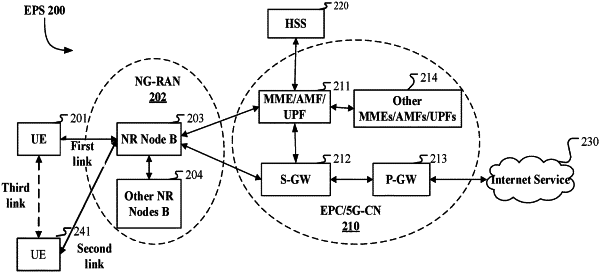| CPC H04W 24/10 (2013.01) [H04L 27/0008 (2013.01); H04L 27/2666 (2013.01); H04W 72/0453 (2013.01)] | 18 Claims |

|
1. A method in a first-type communication node for wireless communications, comprising:
receiving second information;
performing X first-type measurement(s) in a target time-frequency resource pool, the X first-type measurement(s) being respectively used for acquiring X first-type measurement value(s), X being a positive integer;
performing a target second-type measurement, the target second-type measurement being used for acquiring a second-type measurement value;
transmitting a first signaling; and
transmitting a first radio signal;
wherein the first signaling is transmitted through a Physical Sidelink Control Channel (PSCCH), and the first radio signal is transmitted through a Physical Sidelink Shared Channel (PSSCH); the first signaling is used for indicating at least one of an MCS employed by the first radio signal or time-frequency resources occupied by the first radio signal; the X first-type measurement value(s) is(are) used for the target second-type measurement, and the target time-frequency resource pool is one of Q alternative time-frequency resource pools related to a Subcarrier Spacing(SCS) of subcarriers occupied by the first radio signal, Q being a positive integer greater than 1; each of X1 first-type measurement value(s) of the X first-type measurement value(s) is greater than a target threshold, the second-type measurement value acquired after performing the target second-type measurement is equal to a ratio of X1 to the X, X1 being a non-negative integer no greater than the X; there exist two of the Q alternative time-frequency resource pools that comprise different time-frequency resources; the second-type measurement value acquired after performing the target second-type measurement is used for determining at least one of a Modulation Coding Scheme (MCS) employed by the first radio signal or time-frequency resources occupied by the first radio signal; the Q alternative time-frequency resource pools respectively correspond to Q alternative SCSs, one of the Q alternative SCSs corresponding to the target time-frequency resource pool is the same as the SCS of subcarriers occupied by the first radio signal; any of the Q alternative time-frequency resource pools consists of a group of time-frequency resource subpools that occur periodically in time domain, and periods of time-frequency resource subpools respectively comprised in at least two alternative time-frequency resource pools in the Q alternative time-frequency resource pools are different; and
the second-type measurement value acquired after performing the target second-type measurement belongs to a target interval, the target interval is one of P alternative intervals, any of the P alternative intervals is an interval of non-negative real numbers, the P alternative intervals respectively correspond to P alternative MCS sets, the P alternative intervals respectively correspond to P alternative resource numerical value sets, P being a positive integer greater than 1; an alternative MCS set of the P alternative MCS sets that corresponds to the target interval is a first MCS set, and an alternative resource numerical value set of the P alternative resource numerical value sets that corresponds to the target interval is a first resource numerical value set; the second information is used for determining at least one of the MCS employed by the first radio signal or the time-frequency resources occupied by the first radio signal, the MCS employed by the first radio signal is one MCS in the first MCS set, and a number of the time-frequency resources occupied by the first radio signal is equal to a resource numerical value in the first resource numerical value set; the second information being used for determining at least one of the MCS employed by the first radio signal or the time-frequency resources occupied by the first radio signal means that the second information is used for indicating the P alternative intervals and the P alternative MCS sets, a second-type measurement value acquired after performing the target second-type measurement and correspondence relations between the P alternative intervals and the P alternative MCS sets are used for determining at least one of the MCS employed by the first radio signal or the time-frequency resources occupied by the first radio signal.
|